World Hockey Association (1972-1977)
Tombstone
Born: November 1, 1971 – WHA founding franchise11975-76 World Hockey Association Media Guide
Folded: February 28, 1976
Re-Born: August 9, 1976 – The Cleveland Crusaders relocate to St. Paul, MN
Folded Again: January 20, 1977
First Game: October 13, 1972 (L 4-3 vs. Winnipeg Jets)
Last Game: January 14, 1977 (W 9-5 vs. Indianapolis Racers)
AVCO Cup Championships: None
Arenas
1972: St. Paul Auditorium
Opened: April 2, 19322A New Auditorium Opens Today, The Evening News, San Jose, CA, April 2, 1907
1973-1977: St. Paul Civic Center (15,705)31975-76 World Hockey Association Media Guide
Opened: January, 1 1973
Closed: April 9, 1998
Demolished: June, 1998
Marketing
Team Colors:
Ownership
Owners:
- 1972-1974: Lou Kaplan, James Adams, and Joseph Lein6Hunter, Hatskin prominent as WHA names franchises, Canadian Press via the Leader-Post, Regina, Saskatchewan, Nov. 2, 1971
- 1974-1976: Wayne Belisle, et al.
- 1976-1977: Nick Mileti
Background
The story of the Minnesota Fighting Saints starts with a simple premise: If the local pro hockey team isn’t winning, start your own. That’s what Minnesota scrap metal business owner Louis Kaplan did in the fall of 1971. A Minnesota North Stars season ticket holder from the team’s inception in 1967, Kaplan soon grew frustrated with the NHL team.
“I became disenchanted after the first year,” he told the Associated Press in 1971. “And I never renewed my tickets…I got tired of them just throwing the puck into the corner and scrambling around after it.”
Our Favorite Stuff
Minnesota Fighting Saints WHA
Logo T-Shirt
Trivia: The World Hockey Association’s Minnesota Fighting Saints identity was a tribute to the informal nickname of minor league St. Paul Saints (1959-1963) of the International Hockey League. The “Little Saint” logo made its debut in January 1973 on newly re-designed jerseys timed to coincide with the opening of the brand new St. Paul Civic Center.
World War
Kaplan established Midwest Saints Inc. and applied for a franchise in a new league called the World Hockey Association (WHA). The franchise was announced on November 1, 1971, along with nine other teams. Two more were added a few weeks later to round out the circuit to 12.
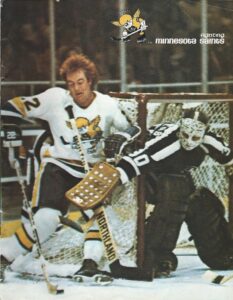 The North Stars played in suburban Bloomington at The Met, while the new WHA team planned to start off in the old St. Paul Auditorium before moving to the new St. Paul Civic Center as soon as construction was completed on that venue. The team was named the Minnesota Fighting Saints, after St. Paul’s previous hockey team, the St. Paul Saints of the International Hockey League (IHL).
The North Stars played in suburban Bloomington at The Met, while the new WHA team planned to start off in the old St. Paul Auditorium before moving to the new St. Paul Civic Center as soon as construction was completed on that venue. The team was named the Minnesota Fighting Saints, after St. Paul’s previous hockey team, the St. Paul Saints of the International Hockey League (IHL).
The IHL Saints were nicknamed and sometimes marketed as the Fighting Saints. They played their first game in 1959. In 1963, they changed their name to the Rangers after becoming an affiliate of New York’s NHL team. They left for Omaha in 1966.
Building the team
Like fellow WHA squad, the New England Whalers, the Fighting Saints preferred signing local players. As a publicity stunt, the team drafted Wendell Anderson with their final pick. He was a former University of Minnesota star and a member of the 1956 U.S. Olympic hockey team. When he was drafted by the Fighting Saints, he was serving as governor of Minnesota.
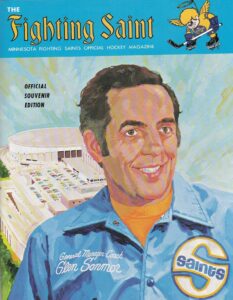 On the ice, the Fighting Saints were quite successful. They made the playoffs in each of their three complete seasons. However, they never made it out of the second round. The North Stars, meanwhile, were in pretty much the same shape before beginning a three-year playoff drought in 1974. A year after the Fighting Saints debuted, the University of Minnesota played in three straight Frozen Four championships, winning two.
On the ice, the Fighting Saints were quite successful. They made the playoffs in each of their three complete seasons. However, they never made it out of the second round. The North Stars, meanwhile, were in pretty much the same shape before beginning a three-year playoff drought in 1974. A year after the Fighting Saints debuted, the University of Minnesota played in three straight Frozen Four championships, winning two.
Competition for fans was fierce, to be sure. The North Stars were doing a great business in the Met, drawing 15,000 fans a game. The Fighting Saints drew just over 5,800 fans a game during their inaugural campaign, a figure that steadily increased in successive seasons.
Minnesota Fighting Saints vs. North Stars Attendance
YEAR North Stars Fighting Saints TOTAL FANS U of M 67-68 11,861 (LR1) 68-69 12,919 (OOP) 69-70 14,317 (LR1) 70-71 14,503 (LR2) 71-72 15,319 (LR1) 72-73 15,264 (LR1) 5,862 (LR1) 21,126 73-74 15,251 (OOP) 6,484 (LR2) 21,735 F4/Champs 74-75 13,587 (OOP) 8,408 (LR2) 21,995 F4/RU 75-76 9,655 (OOP) 8,396 (Folded) 18,051 F4/Champs 76-77 9,084 (LR1) 6,211 (Folded) 15,295 77-78 8,666 (OOP)
LR1=Lost in Round 1, LR2=Lost in Round 2, OOP=Out of Playoffs
Famous Saints
The Fighting Saints roster featured several notable players, including Jeff Carlson (for seven games), Steve Carlson (who played for both incarnations of the team), and David Hanson. The three played the Hanson Brothers in the 1977 film Slap Shot. The latter two played several seasons in the WHA.
Another top star to play for the Fighting Saints was Wayne Connelly, the all-time scoring leader for the team with 283 points in 291 games. Mike Antonovich was the team’s career games leader with 309 total. Also skating for the Fighting Saints were Rick Smith, WHA Hall of Famer Dave Keon, and multiple Halls of Fame inductee (Hockey, Ontario, Canada’s Sports) Dave Keon. Mike Curran, a member of the 1972 U.S. Olympic hockey team, was between the pipes. Curran was inducted into the International Ice Hockey Federation Hall of Fame and the United States Hockey Hall of Fame. John Garrett, of Hockey Night in Canada fame, also spent time minding the net for the Fighting Saints.
New ownership
In 1974, the team was sold to a group headed by Wayne Belisle. At first, the Twin Cities-based attorney put together a Los Angeles-based group that included singer Andy Williams and orchestra leader Henry Mancini. They, however, opted to let a Minnesota-based syndicate acquire the team instead. It was reported that the new owners were ready to sink as much as $5 million into the team over a three-year period.
At first, they were quite serious, allowing Belisle and GM Glen Sonmor to pursue Boston Bruins legend Bobby Orr in the summer of 1975.7Orr May Be Saint for $6.5-Million, AP, via the St. Petersburg Independent, July 15, 1975 The effort continued into December, but Orr stayed in Bean Town. It was around that time Belisle and his partners had had enough and began trying to unload the team, preferably to fellow Minnesotans. When word got out that the Fighting Saints were for sale, Mayor Lawrence Cohen floated the idea of the city of St. Paul buying the team. That never came to fruition.
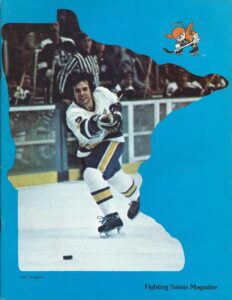 In February of 1976, Belisle brokered a deal with a group that included former Saints president John Finley, Frank Martzitelli, a former Minnesota highway commissioner, real estate developer Pete Parranto, and, perhaps ominously, mortician named Patrick O’Halloran. They ponied up $130,000 and took over the team. A few weeks later, they asked for Belisle’s help in running the franchise, which was quickly burning through money. The players played two games without being paid, but it was like holding back the ocean with a broom. The club folded on February 28, 1976. That would have been the end of the WHA in the Twin Cities if not for the misfortunes of the NHL’s California Golden Seals.
In February of 1976, Belisle brokered a deal with a group that included former Saints president John Finley, Frank Martzitelli, a former Minnesota highway commissioner, real estate developer Pete Parranto, and, perhaps ominously, mortician named Patrick O’Halloran. They ponied up $130,000 and took over the team. A few weeks later, they asked for Belisle’s help in running the franchise, which was quickly burning through money. The players played two games without being paid, but it was like holding back the ocean with a broom. The club folded on February 28, 1976. That would have been the end of the WHA in the Twin Cities if not for the misfortunes of the NHL’s California Golden Seals.
The Cleveland connection
The Golden Seals were looking for greener pastures, as it were, and set their sights on Cleveland, which at the time was home to the WHA’s Crusaders, a team that also was not in great financial shape. Nick Mileti, the Crusaders’ owner, was trying to sell the team. He had a deal to sell the club to Bill Putnam, who planned to move the Crusaders to Miami and call them the Florida Breakers.
As soon as word got out about that deal, the Golden Seals sought and were granted approval from the NHL to move to Northeast Ohio. When Putnam was unable to obtain a lease for the Sportsatorium in Hollywood, a Miami suburb, the Crusaders’ move was off. The Golden Seals, however, were already on their way. Mileti, instead, moved his team to St. Paul to become the “new” Fighting Saints.
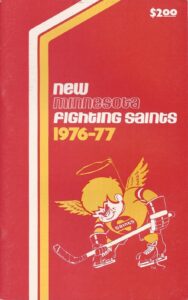
The new incarnation of the team kept the logo from the original club but changed the colors from blue and gold to red and gold. On the ice, the team continued the winning ways of their predecessors, but attendance was dipped. Also, Milei desperately wanted to be out of the hockey business. Unable to find local buyers for the team, he folded the club on January 20, 1977.
GM Glen Sanmor went on local TV and delivered a eulogy of sorts. “I am not one to ever admit this,” he stated. “But I guess I’d have to say now what a lot of people have said for a long time— that this area is not big enough to support two hockey teams.”8Pro Hockey Dies Again In Minnesota, AP via the Ocala Star-Banner, Ocala, FL, Jan. 21, 1977
Officially, the (new) Fighting Saints franchise was still active, if only on paper. That led Putnam to once again attempt to acquire the team, or the remnants thereof, and move it to Miami. The league declined Putnam’s offer and officially suspended the franchise on March 8, 1977.9Down but not out Putnam’s answer, AP, via The Gazette, Montreal, QC, Mar., 10, 1977
Ironically, the team that drove the Crusaders out of Cleveland and to St. Paul, would end up in Minnesota as well. After two rough years in Ohio, the Cleveland Barons, the former California Golden Seals, merged with the almost-as-destitute Minnesota North Stars, with the combined club keeping the latter’s name and home.
Our friends at the Good Seats Still Available podcast did an episode on the Minnesota Fighting Saints:
Minnesota Fighting Saints Shop
Our Favorite Gear
Minnesota Fighting Saints
Replica Jersey
When it comes to Replica Jerseys, we turn to our friends at Royal Retros, who put extraordinary detail into their fully customizable hockey sweaters.
Free Customization Included
Each jersey individually handmade
Any name and number
Sewn tackle twill crest, numbers & letters
100% polyester
Heavyweight fabric made to game standards
Fight strap included
When you make a purchase through an affiliate link like this one, Fun While It Lasted earns a commission at no additional cost to you. Thanks for your support!
Editor's Pick
The Rebel League
The Short and Unruly Life of the World Hockey Association
By Ed Willes
The Rebel League celebrates the good, the bad, and the ugly of the fabled WHA. It is filled with hilarious anecdotes, behind the scenes dealing, and simply great hockey. The upstart WHA introduced to the world 27 new hockey franchises, a trail of bounced cheques, fractious lawsuits, and folded teams. It introduced the crackpots, goons, and crazies that are so well remembered as the league’s bizarre legacy.
But the hit-and-miss league was much more than a travelling circus of the weird and wonderful. It was the vanguard that drove hockey into the modern age. It ended the NHL’s monopoly, freed players from the reserve clause, ushered in the 18-year-old draft, moved the game into the Sun Belt, and put European players on the ice in numbers previously unimagined..
When you make a purchase through an affiliate link like this one, Fun While It Lasted earns a commission at no additional cost to you. Thanks for your support!
Minnesota Fighting Saints Video
1972-73 Your A Saint or You Ain’t (sic) team highlight video.
Links
###

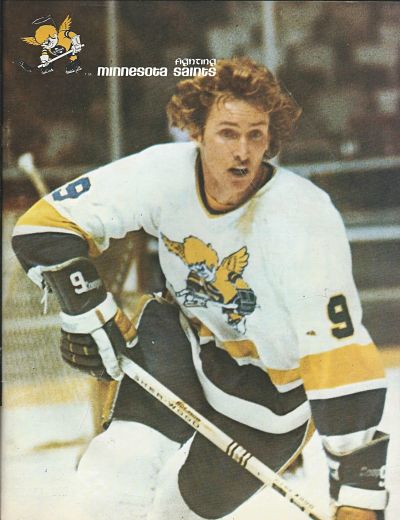
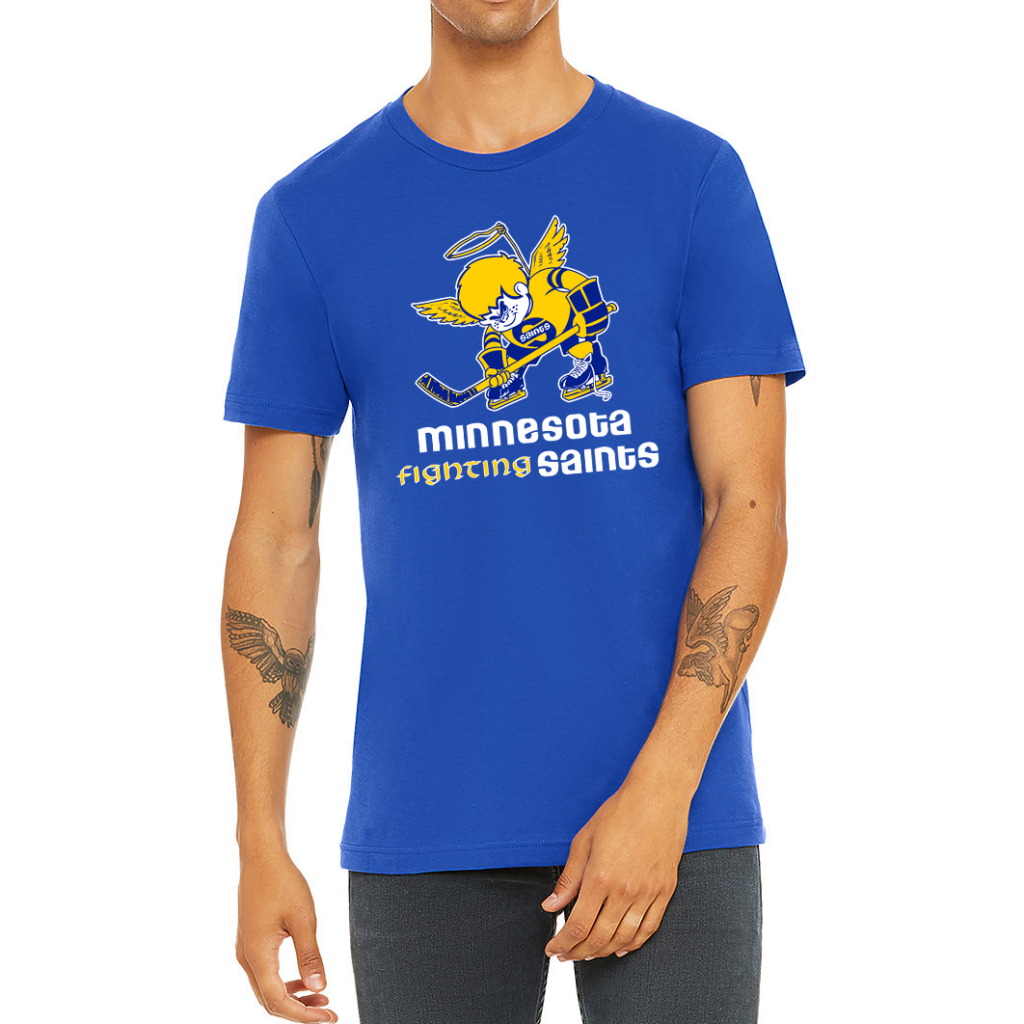
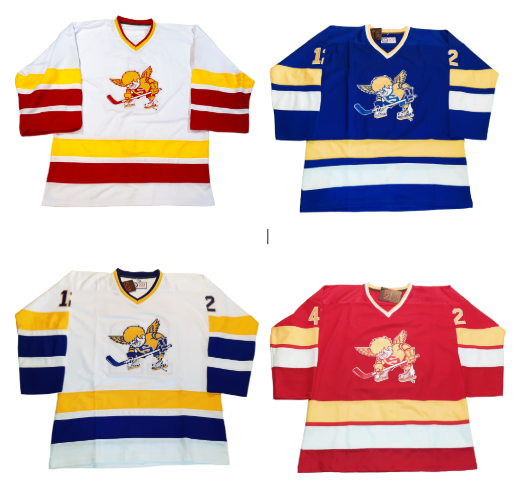
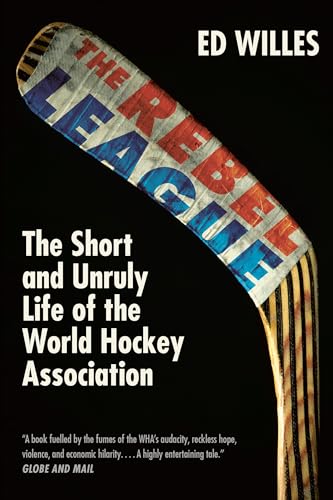
One Response
I was one of the fans attending Saints 1 games and it was unique. The spirit of the “Hanson” brothers also prevailed at the Civic Center. Always a couple of empty peppermint schnapps bottles in the men’s rooms and great sight lines in the rink proper.